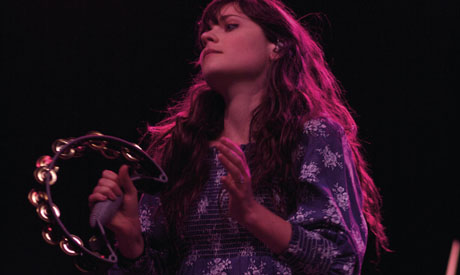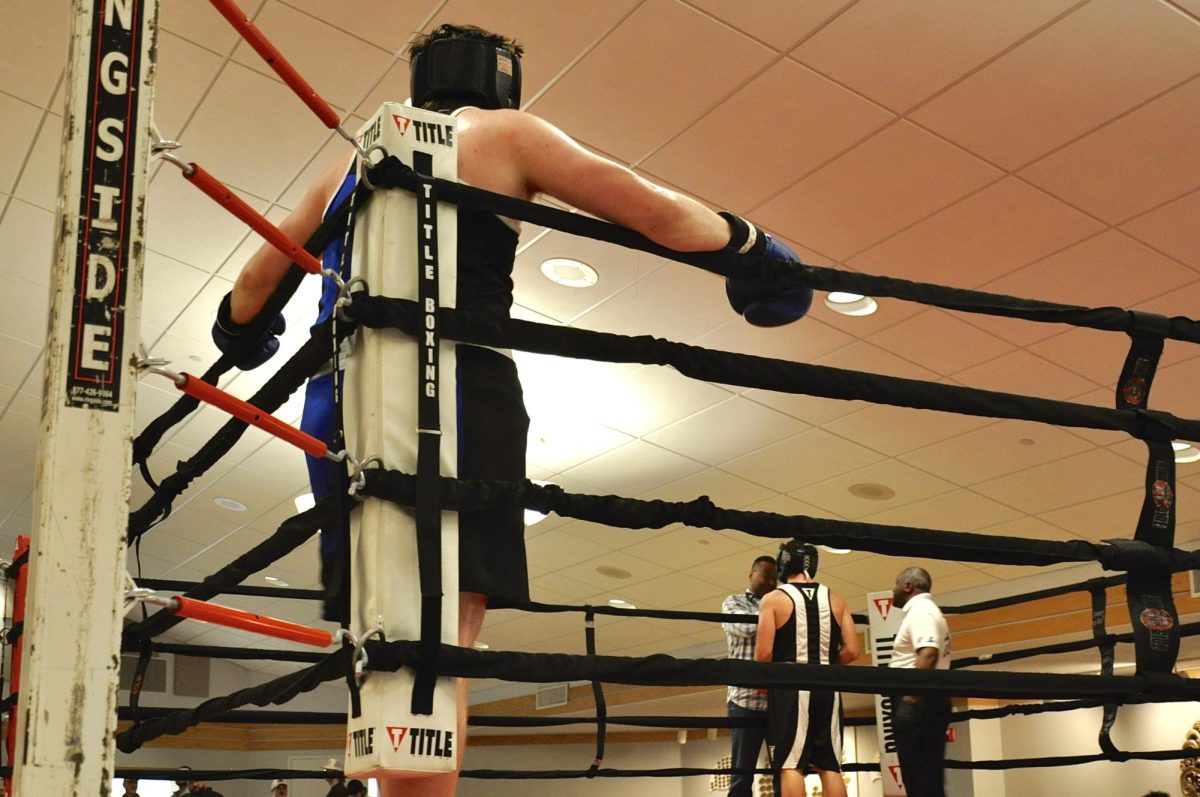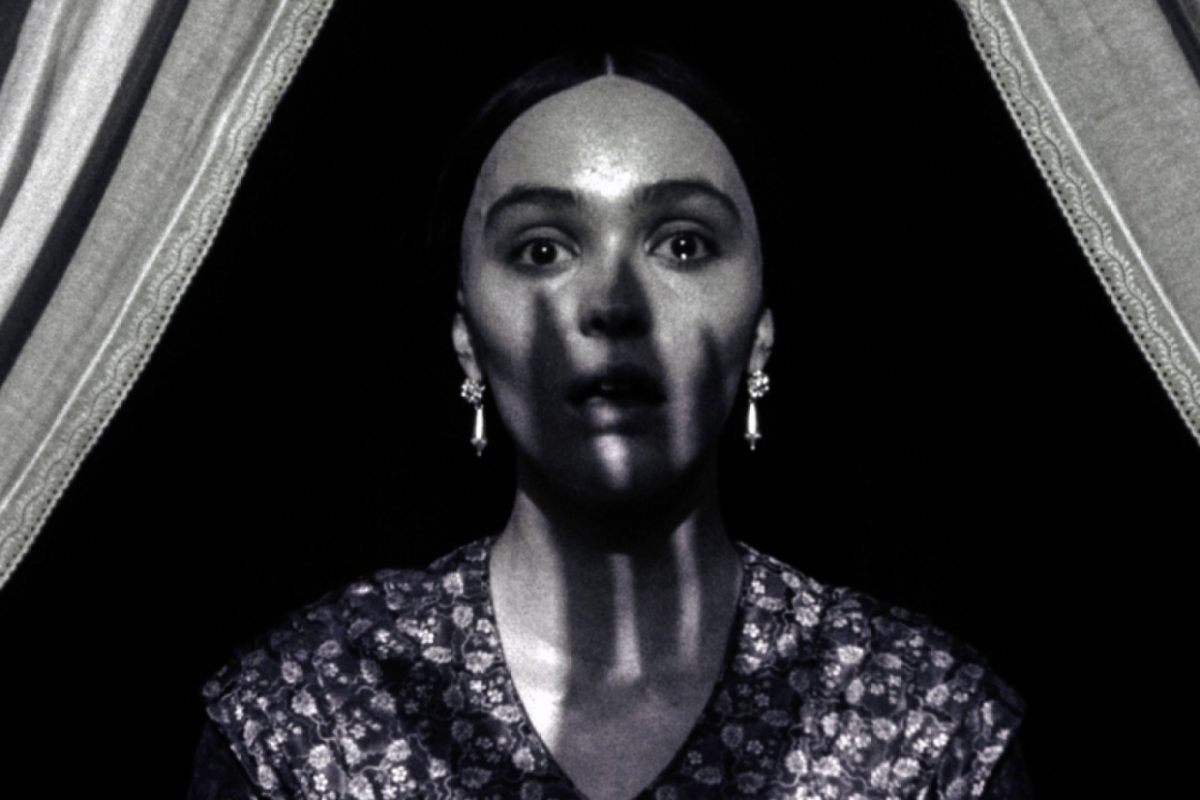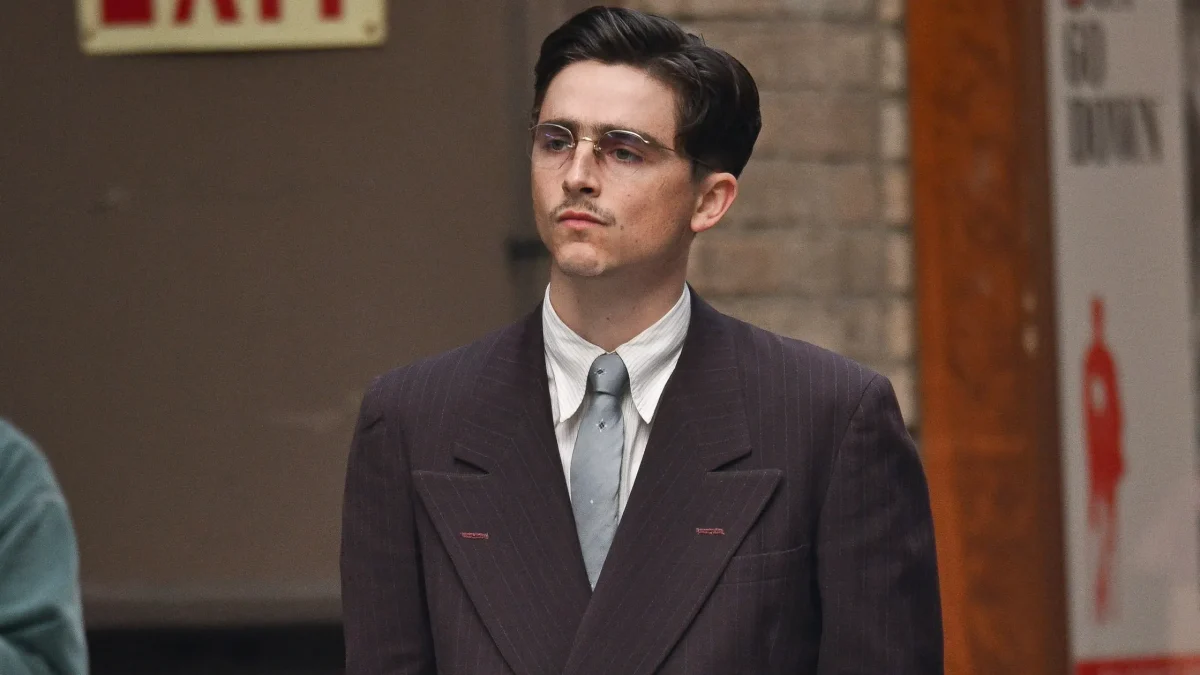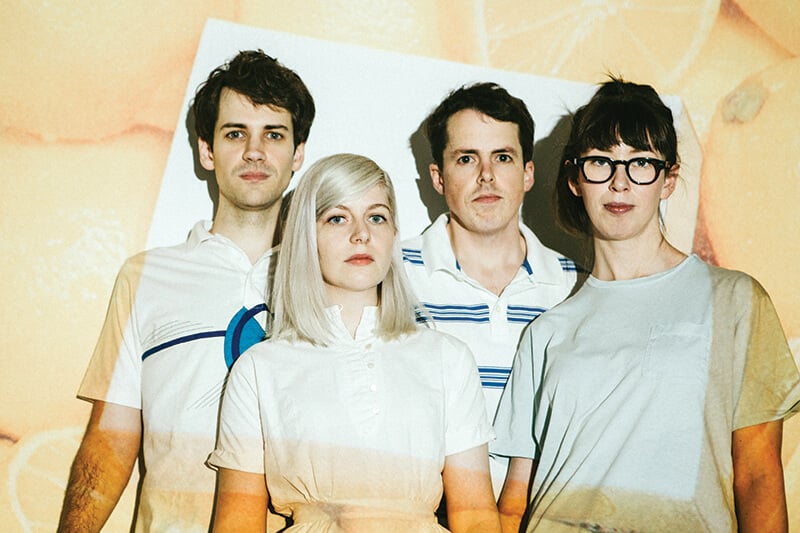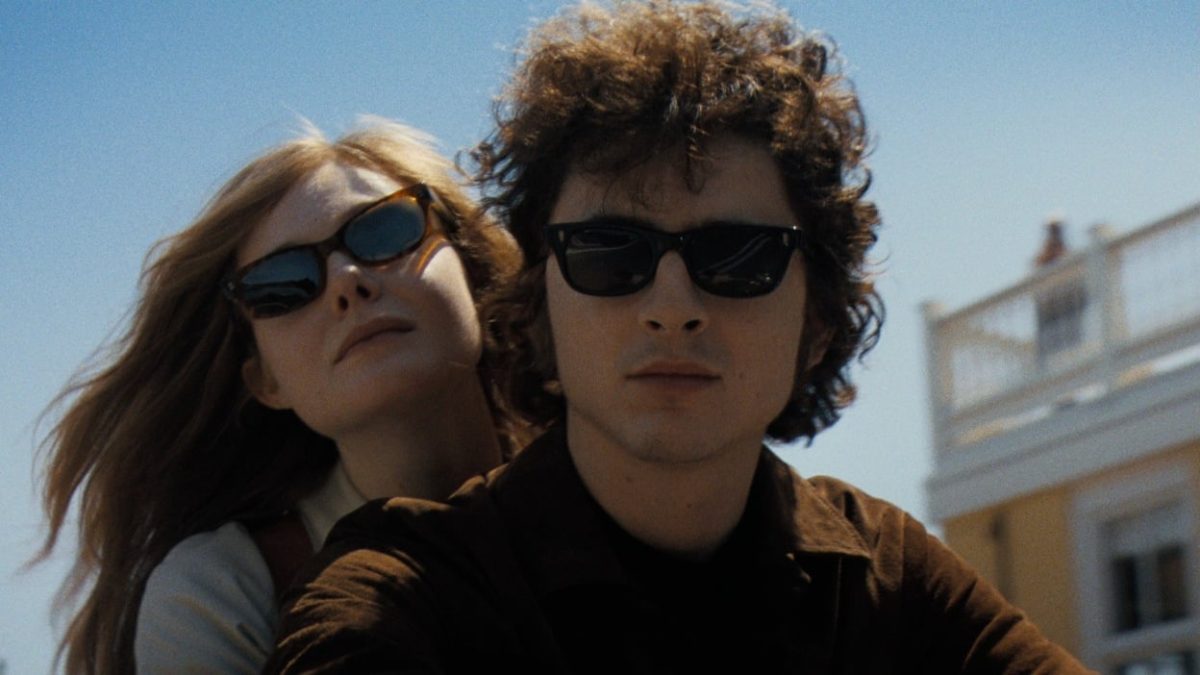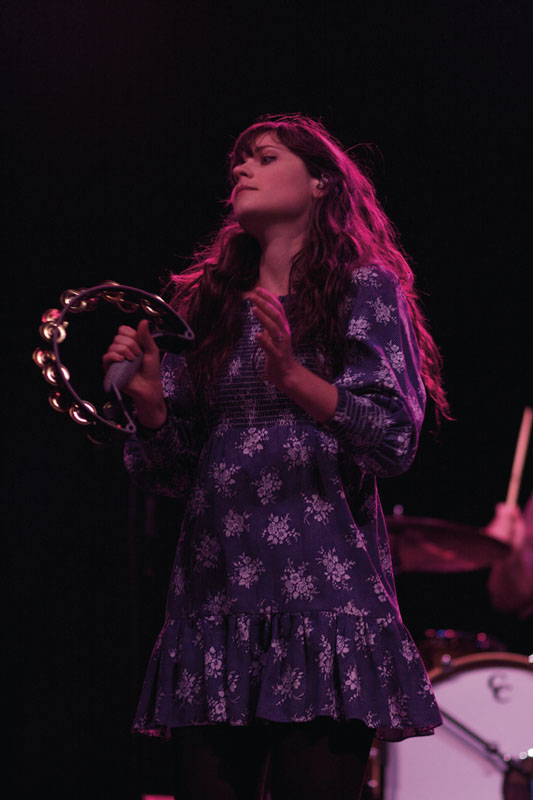 For a music festival in its first year, creator Brian Cohen felt that LouFest was an unqualified success.
For a music festival in its first year, creator Brian Cohen felt that LouFest was an unqualified success.
After spending the weekend at the festival, which spanned 20 hours packed with 18 bands and an estimated eight thousand to 10 thousand attendees, I have to agree with him.
On day one of the festival, I arrived early equipped with a
bottle of sunscreen, a camera and a notebook.
The first half of the day started off rather slow.
The crowd seemed to grow as the day went on, with attendance reaching its peak during the last three shows. These
shows consisted of Airborne Toxic Event, Built to Spill and Broken Social Scene.
While Cohen said that Broken Social Scene drew one of the biggest crowds of the festival, I felt that the Airborne Toxic event was the best act of the night. As Cohen said, they were killer live.
The quintet, named for a phrase in Don DeLillo’s book White Noise, put on a high-energy show full of catchy tunes.
Their use of the electric violin and cello added an interesting dynamic. This was the band’s 381st show in support of their debut self-titled album. The band recently finished recording their second album. They debuted several of their new songs at the festival. I had never heard this band before, but after watching them perform, I am definitely a fan.
The second day I arrived better prepared to brave the sun and the crowd. I had anticipated the attendance to be greater, and it was.
Going in, I didn’t know much about the Carolina Chocolate Drops and was surprised to see such a large crowd at their show. After their wonderful show, I understood the crowd. They engaged the crowd with a sing-along and did awesome covers of Johnny Cash’s Jackson, and Blu Cantrell’s Hit ‘Em Up Style. Their music is a mix of folk and bluegrass music that incorporates instruments like the banjo, milk jug and kazoo. The band released their most recent album, Genuine Negro Jig, back in February. According to Cohen, the biggest drawing acts of the night were Jeff Tweedy and She & Him.
Festivalgoers claimed their spots in advance for the She & Him show, and the audience was by far the largest of the festival. This was with good
reason. They played lighthearted, catchy songs from both of their albums : Volume One and Volume Two. Overall, I enjoyed the choice of artists. There was a diverse lineup and, therefore, something for everyone. This eclectic set list was also positive because it exposed me to many new bands and styles that I may not have heard otherwise.
“It’s cool to see St. Louis start up a festival where people who like diverse types of music can come together,” Senior Alexis Lassus said.
She was one of the several Saint Louis University students who volunteered at the festival.
The festival’s green initiative was part of the reason she decided to volunteer.
“It was the festivals motivation to offset energy consumption…. They asked volunteers to bike to the festival or car pool,” Lassus said.
In attempt to be green the festival also had a water station at which attendees could refill water bottles. However,
it quickly became evident that one station just wasn’t going to cut it. Between the increasing heat and increasing crowd the water line became quite long.
As Cohen said, “For the first year, the execution was remarkable…By midday Sunday, it seemed to be on autopilot.”
Before the festival, I was expecting the sometimes rather long downtime that seems to occur between the transitions of acts. I was pleasantly surprised when I found this was not the case. The Loufest team remedied this by having two stages on which the shows alternated, so while one was playing, another was setting up. This resulted in a very short five – to ten-minute breaks in between shows. This is just one of the many examples of the festival’s successful execution.
Another positive aspect of the festival was the restaurants present, such as Drunken Fish, Local Harvest Café and Catering and Buck’s Good Eats. The presence of vegan and vegetarian options were especially nice.
My one major complaint with the festival is the time-of-year in which it took place. It is no secret that August in Missouri is a miserably hot and humid time of year. I feel that I would have been able to further enjoy the festival had the weather been cooler. In the future perhaps it could take place in late September instead.
Cohen said this is a conversation the team will be having over the next few months. They are working on ideas to improve the festival, such as having a third stage and adding a another day to the festival.
“The goal is to grow,” Cohen said.




